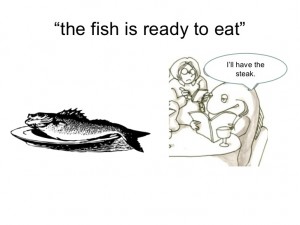
Pragmatic Language Impairment
Pragmatic Language Impairment
Pragmatic Language Impairment- Pragmatics is the corpus of rules that govern the use of language in various social situations, i.e. the social skills of language (when, where, with whom, and how language is used). These skills are important for social, educational, and career success. Social norms have expectations for proper pragmatic usage in language, such as topic maintenance, turn-taking in conversation, eye contact, and providing the listener with information. These rules may vary depending upon cultural norms.
What is pragmatic language disorder?
A pragmatic language disorder may harm social relationships and social acceptance by others. Children with pragmatic language difficulties may be unable to vary their language use, may relate information or stories in a disorganized way or say inappropriate or off-topic things during a conversation. Pragmatic speech disorder can also be related to difficulties with grammar and vocabulary development.
As children get older and more social skills are demanded peers may avoid conversation with children with pragmatic speech issues and therefore these children have fewer friends and are less accepted in social situations.
Symptoms
- Difficulty with conversation exchanges
- Difficulty telling a story
- Difficulty responding to indirect requests
- Difficulty with topic initiation
- Difficulty with conversational repair strategies (e.g. asking “What did you say?” or “Can you explain?”)
- Demonstrating little variety in language use

Diagnostic Criteria for Social (Pragmatic) Communication Disorder
The following criteria are from The 2013 Diagnostic and Statistical Manual of Mental Disorders Fifth Edition, DSM-5™.
- Persistent difficulties in the social use of verbal and nonverbal communication as manifested by all of the following:
- Deficits in using communication for social purposes, such as greeting and sharing information, in a manner that is appropriate for the social context.
- Impairment in the ability to change communication to match context or the needs of the listener, such as speaking differently in a classroom than on a playground, talking differently to a child than to an adult, and avoiding the use of overly formal language.
- Difficulties following rules for conversation and storytelling, such as taking turns in conversation, rephrasing when misunderstood, and knowing how to use verbal and nonverbal signals to regulate interaction.
- Difficulties understanding what is not explicitly stated (e.g., making inferences) and nonliteral or ambiguous meaning of language (e.g., idioms, humour, metaphors, multiple meanings that depend on the context for interpretation.)
- The deficits result in functional limitations in effective communication, social participation, social relationships, academic achievement, or occupational performance, individually or in combination.
- The onset of the symptoms is in the early developmental period (but deficits may not become fully manifest until social communication demands exceed limited capacities).
- The symptoms are not attributable to another medical or neurological condition or to low abilities in the domains of word structure and grammar.
- They are not better explained by autism spectrum disorder, intellectual disability (intellectual developmental disorder), global developmental delay, or another mental disorder.

Is Pragmatic Language Disorder a component of autism?
SCD is also seen as distinct from several neurodevelopmental conditions, such as autism spectrum disorder, that may similarly damage communication abilities (ASD). There are numerous approaches to differentiate between autism and social pragmatic communication disorder. People with autism typically repeat particular actions and frequently engage in disruptive conduct. These behaviours are not present in those with a SCD diagnosis.
How is social pragmatic language disorder treated with speech therapy?
Speech-language pathologists (SLPs) are crucial to the diagnosis and care of people with social communication disorders like SCD.
Despite the fact that everyone occasionally has social anxiety, raising a child with SCD can make navigating social situations difficult on a regular basis. One of the most successful SCD treatment options is speech therapy. Make an appointment for your free initial call now to learn more about this illness and how speech therapy might help. When determining whether a social communication problem is present, the SLP always takes into account cultural and familial variations and watches the kid as a whole.
One or more of the following may be covered during a speech therapy appointment:
- Learning and using social behaviours
- Learning The Best Ways to Make Friends
- Education in Social Skills (greetings, introductions, conversations, humor, etc.)
- Playing games and doing other activities to practise skills like taking turns, asking questions, etc.
- Programming in groups
- Education for Parents & Caregivers
Speech therapists are crucial to solving this difficult problem. Like with other communication issues, a competent SLP’s early detection can alter the course of a child’s social communication development. SLPs can significantly contribute to a child’s or adolescent’s ability to succeed in social and academic contexts.
Treatment
Treatment for a pragmatic language disorder involves teaching appropriate strategies for social awareness.
- Use role play to help your child understand appropriate language use in various social situations such as school, church, the library, a party, etc. Create scenarios for your child and help them learn how to respond in a socially appropriate manner.
- Discuss with your child various ways of requesting, such as polite (May I have a drink?) versus impolite (Give me a drink NOW) and direct (Shut up) versus indirect (Would you mind talking in a quieter voice?). Discuss with your child why some ways of asking or requesting something might be more persuasive and appropriate than others.
- Work on general conversation and storytelling with your child. Use pictures, objects or a story outline to enhance visual cues for storytelling.
- Read and discuss: Read a book with your child, asking and encouraging open-ended questions such as “what do you think about what he did?”
- Talk about the feelings: Books and stories provide a great opportunity to talk about feelings. Suggest why you think a character in a story is behaving or feeling a particular way. Try extending this to real-life situations, privately discussing what a friend or sibling might be feeling and why.
- What’s next? Have your child try to predict what will happen next in a story. Help him locate the clues. Or work backwards. Once an event happens, go back and figure out the clues leading up to the event. Take, for example, a picture of spilled milk and food on the floor; ask what might have happened.
- Introduce your child to popular, developmentally appropriate shows and public figures so he can join related conversations with friends and classmates.
- Plan structured play dates. Begin with just one friend at a time and have a planned activity with a time limit – say, 60 to 90 minutes to start.
Please leave us a reply if you found this post useful. Subscribe here for more information!
- Birth – 1 Year : Speech & Language Milestones - December 22, 2022
- Amazing Apps for Speech therapy - October 1, 2018
- Childhood Apraxia of speech (CAS) - September 8, 2018


Leave a Comment
(0 Comments)